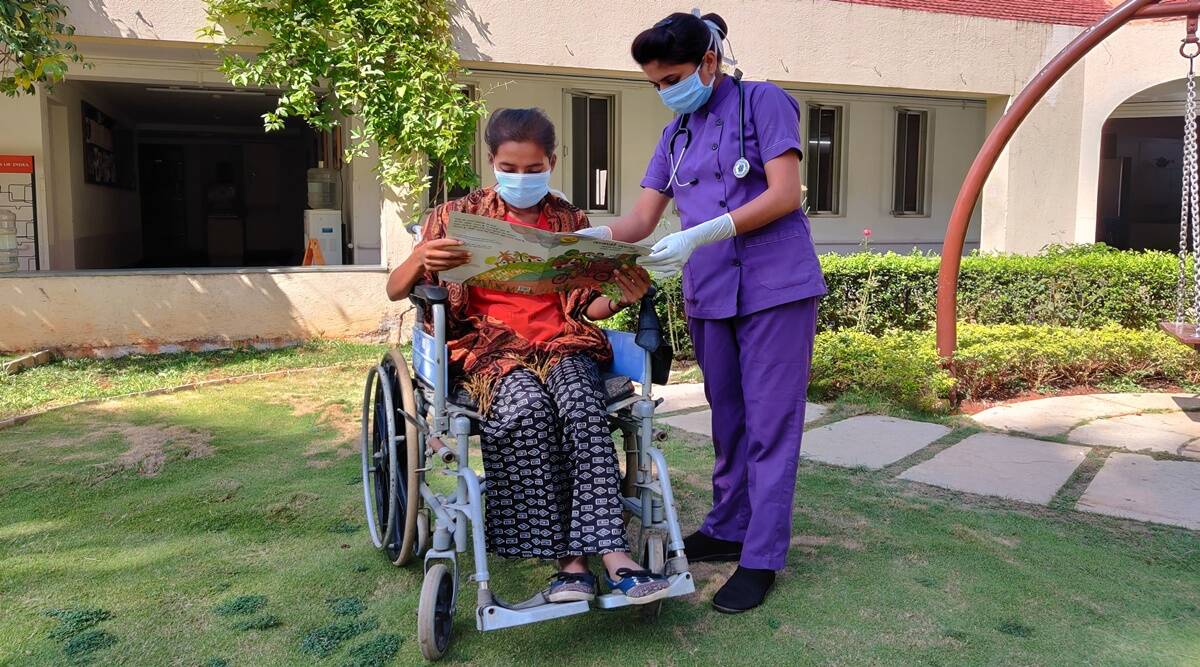August 11, 2021 9:36:18 pm
 Palliative care is the strongest tool we have to relieve health-related pain and suffering. (File/Representational)
Palliative care is the strongest tool we have to relieve health-related pain and suffering. (File/Representational) Written by M R Rajagopal
Earlier this month, a patient suffering intense pain arrived at a quarantine centre in Kerala. She received her cancer diagnosis just before most states in India locked down amid the horrific wave of Covid-19. Hospitals in her city, already overloaded, said they could not take on new patients. For six weeks, the patient looked for institutions that could treat her; all the while, the cancer spreading to her bones.
She arrived at the Kerala quarantine centre late at night, and we registered her for palliative care. A doctor dropped off morphine to relieve her immediate pain. Unfortunately, when I spoke to her the next day, I was surprised to hear the pain was only under control when she sat. She told me the hard, matless cots in the quarantine centre were too painful to lie on. After travelling all day to get there, this patient did not have even a night of rest. So our team set out for the second part of her pain management, bringing her a mattress — an act no less important than the prescription of morphine.
When we talk about access to palliative care, we often think only about pain and medications, but it is crucial to look at the whole picture to see the extent of suffering — including social issues. Palliative care is not just for dying, it’s about getting people back to life.
Palliative care is the strongest tool we have to relieve health-related pain and suffering. By managing pain, as well as addressing psychological, social and spiritual suffering, patients and their families can face a different experience of illness — dignified and pain-free.
Sadly, access to such care remains the exception and not the rule. There is a huge unmet burden of suffering in low- and middle-income countries, to the tune of 60 million people. The reasons for this are manifold. Overburdened and under-resourced healthcare systems rarely prioritise palliative care. Healthcare workers are taught to focus on the disease, rather than the person. Strict laws around opioids mean morphine can be difficult to access. Cultural taboos make public discussions around death challenging.
In India, we too have faced these same obstacles. Nationwide, at most 4 per cent of patients have access to palliative care leaving millions out. For 18 years, Pallium India has been working to provide pain relief — first in Kerala, and later in India at large.
In the intervening years, we have seen the government take some truly remarkable steps toward offering universal palliative care. In 2014, Parliament voted to amend India’s Narcotics Act — a move that greatly widened access to morphine by reforming dangerously onerous licensing requirements for hospitals and pharmacies. Three years later, in 2017, the National Health Policy included palliative care for the first time. It included palliative care as part of primary health care, something that would allow it to be accessible at 1,50,000 local-level family wellness centres. And in recent years, palliative care has been added to both the post-graduate and undergraduate medical curricula — a crucial step to ensuring the healthcare workers of tomorrow understand the role they can play in alleviating suffering.
But while these legal, policy, and curricula changes represent a critical foundation, much remains to be done to build on it.
Despite the new curricula, for instance, less than 10 per cent of the nation’s 558 medical colleges have the staff to teach this subject. Similarly, while the healthcare policy incorporates palliative care into primary care, unless it’s implemented in tertiary care, patients undergoing treatment for long periods will be denied palliative care.
While accessing sufficient resources has been an obstacle, one of the chief challenges is India’s decentralised healthcare system. Last year, Pallium partnered with India’s National Health Systems Resource Centre to help integrate palliative care into primary care. Through this programme, we have begun training national and state trainers, who in turn train community health workers — eventually reaching 1.2 million of them. If India manages to implement everything it has drawn up plans for, it will be a model for other low to middle-income countries.
This is particularly true in the era of Covid-19. Last year, the World Health Assembly passed a resolution calling for the inclusion of palliative care in Covid management strategies. This virus amplifies suffering for the patient. Being unable to breathe is one of the most frightening feelings imaginable. People grow delirious, suffering from hallucinations and delusions. Perhaps most cruelly, they must suffer alone — cut off from loving, human contact. And so we face a second, invisible pandemic, an invisible pandemic of grief, loss, and suffering among both patients and their loved ones. Here, too, palliative care can ease pain. Through drugs, yes, but also through things like grief hotlines, which we have started recently. Integrating palliative care into Covid treatment is essential for patients’ and families’ wellbeing because sometimes grief can destroy generations.
The pandemic has exposed far too many of us to pain and suffering. An effective, robust, and widely available palliative care approach will help not only to provide us with immediate relief but will also help us better cope with any humanitarian crisis in the future.
(Rajagopal is the founder of Pallium India, a palliative care NGO based in Kerala)
- The Indian Express website has been rated GREEN for its credibility and trustworthiness by Newsguard, a global service that rates news sources for their journalistic standards.

